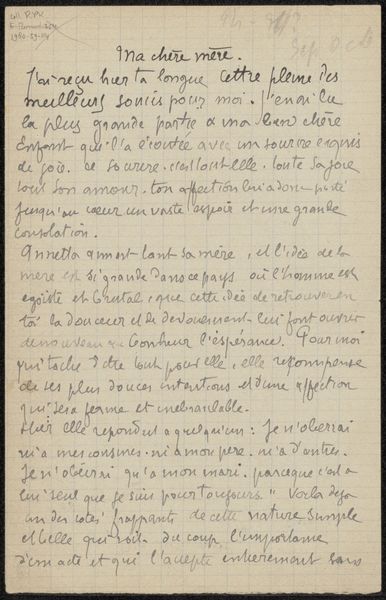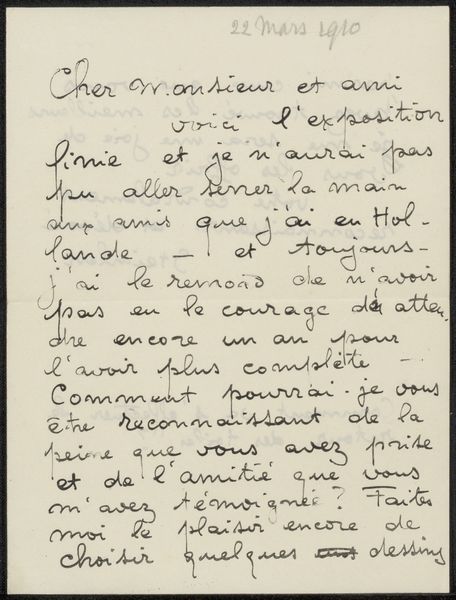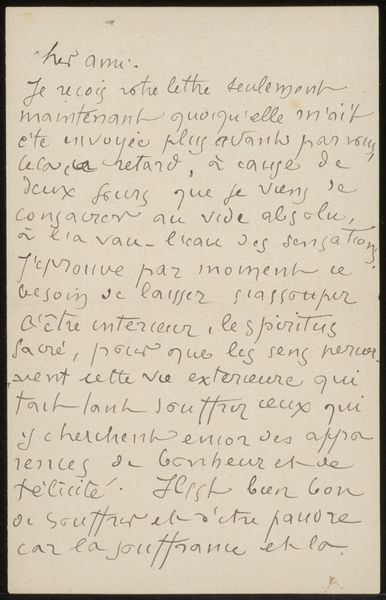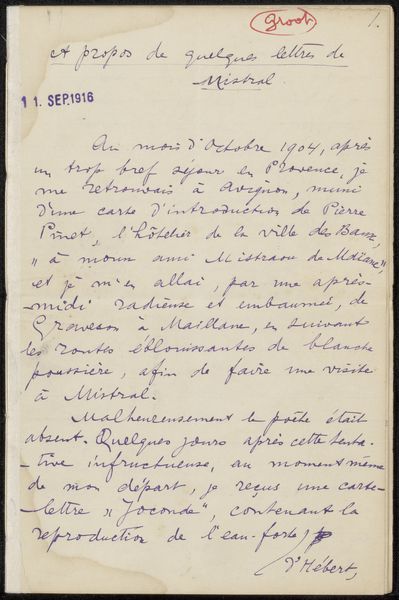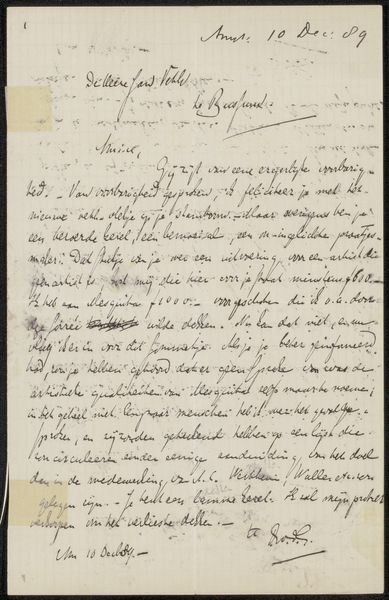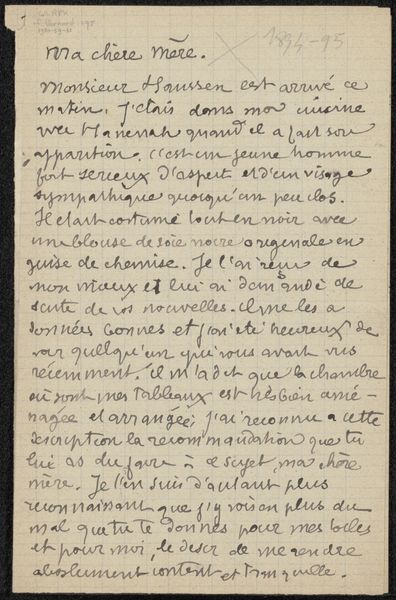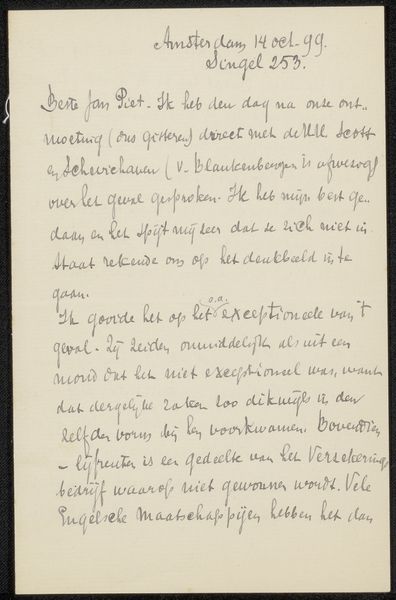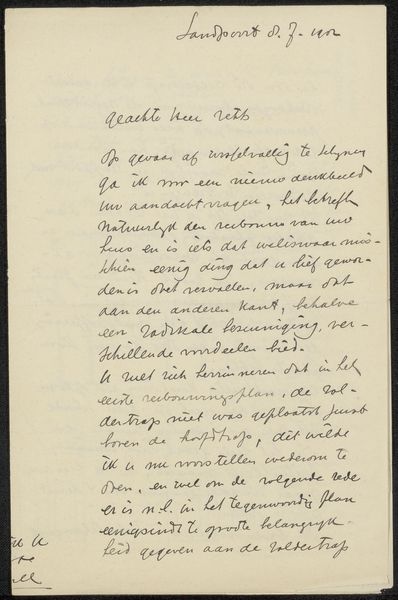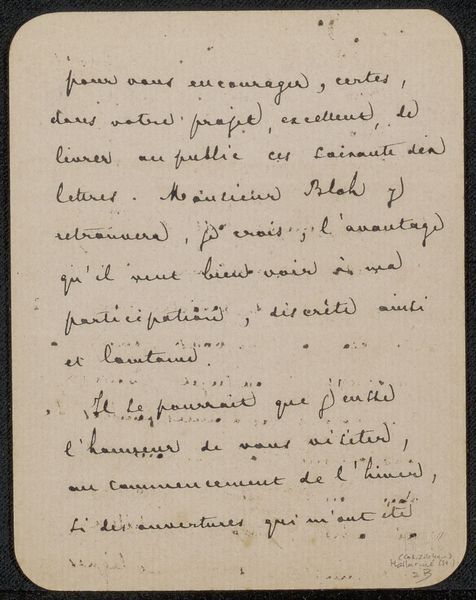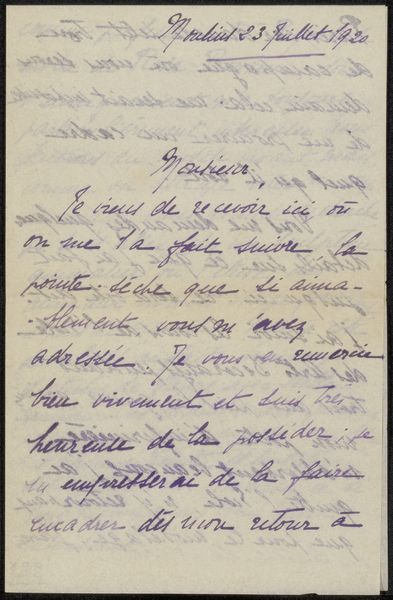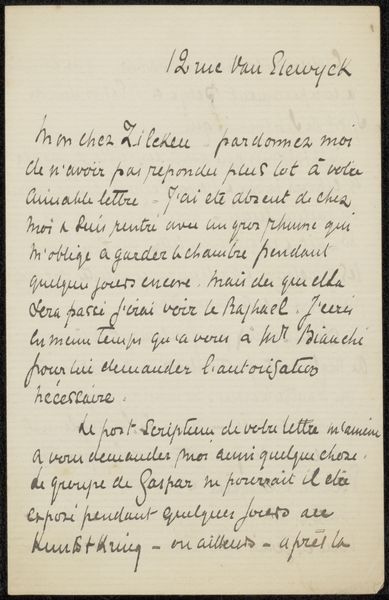
drawing, paper, ink, pen
#
drawing
#
hand-lettering
#
ink paper printed
#
hand drawn type
#
hand lettering
#
paper
#
personal sketchbook
#
ink
#
hand-drawn typeface
#
ink colored
#
pen work
#
sketchbook drawing
#
pen
#
sketchbook art
Copyright: Rijks Museum: Open Domain
Editor: This is "Brief aan Philip Zilcken," a letter by Auguste graaf van Gilbert de Voisins, made before 1918, with pen and ink on paper. It looks like a handwritten note, almost like a personal thought captured. I'm curious – what strikes you when you look at this piece? Curator: What immediately grabs me is the act of correspondence itself. Letters were a vital form of communication and connection, especially within artistic and intellectual circles. How does the content of the letter engage with or subvert power dynamics inherent in that exchange, considering De Voisins’s social standing? Who was Philip Zilcken, and what was their relationship? Editor: I think Zilcken was a fellow artist, possibly a mentor. So, it's about that exchange, but filtered through class, gender, and maybe even sexuality? Curator: Exactly. Letters allowed for the construction and negotiation of identities. Look at the letterhead, “Caverne Royale,” and the Paris address; this situates De Voisins in a specific social milieu. Does this detail signal something about artistic identity or social aspirations? How might the carefully chosen words in the letter perform or mask underlying tensions or desires, reflecting social conventions of the time? The handwriting becomes a visible marker of persona. Editor: That’s fascinating. So it's not just a simple note; it’s this whole performance of self. I hadn’t considered how much context could be packed into something seemingly so simple. Curator: Precisely! And by studying these elements, we can reveal narratives of gender, class, and artistic identity often overlooked in traditional art historical accounts. These seemingly small everyday actions create larger cultural contexts. Editor: That makes me rethink how I approach even the simplest works; I will look at it with a new awareness of its social and historical framework. Thanks for the insight.
Comments
No comments
Be the first to comment and join the conversation on the ultimate creative platform.
